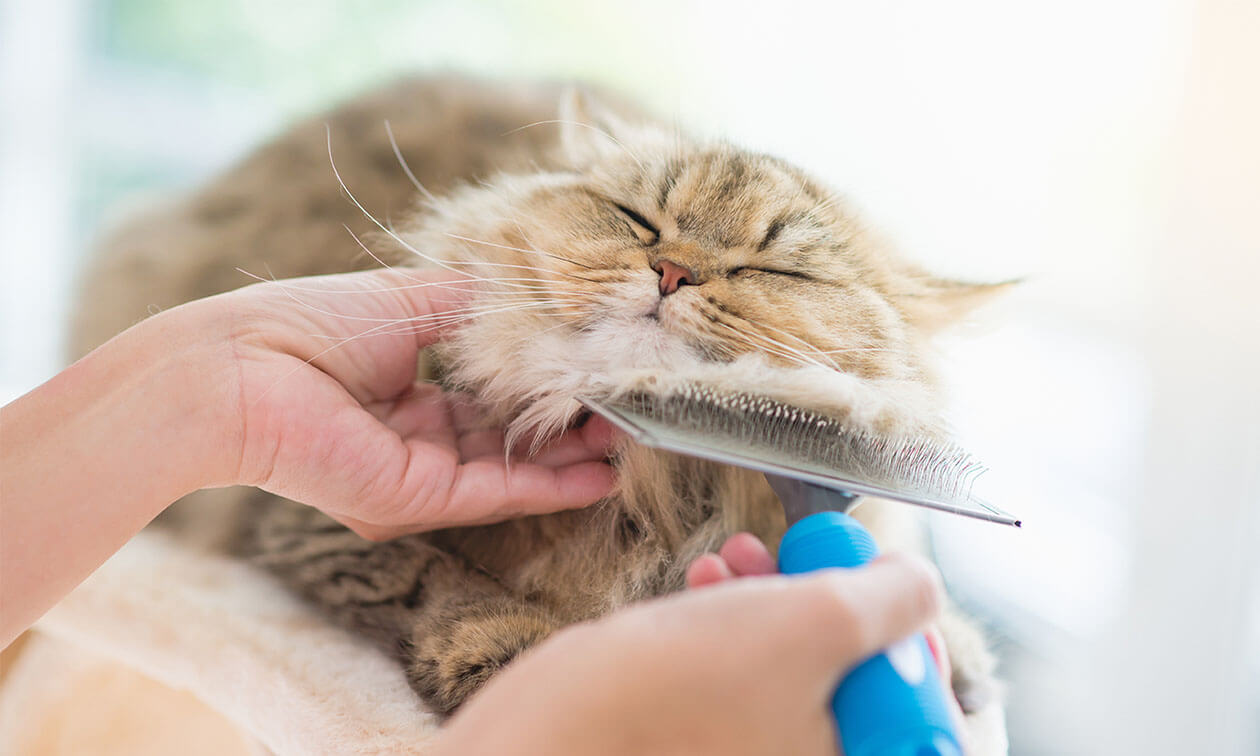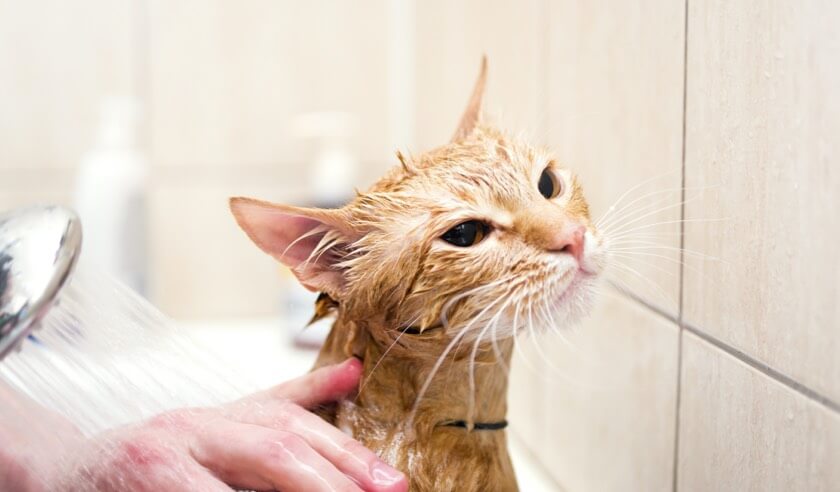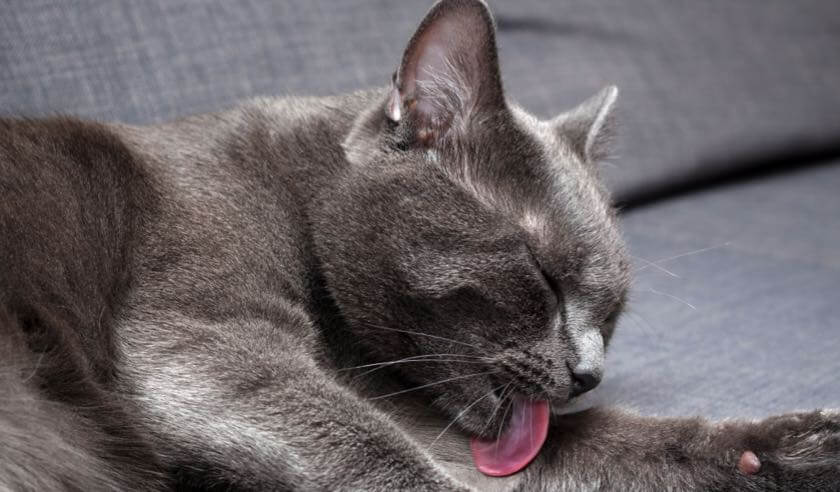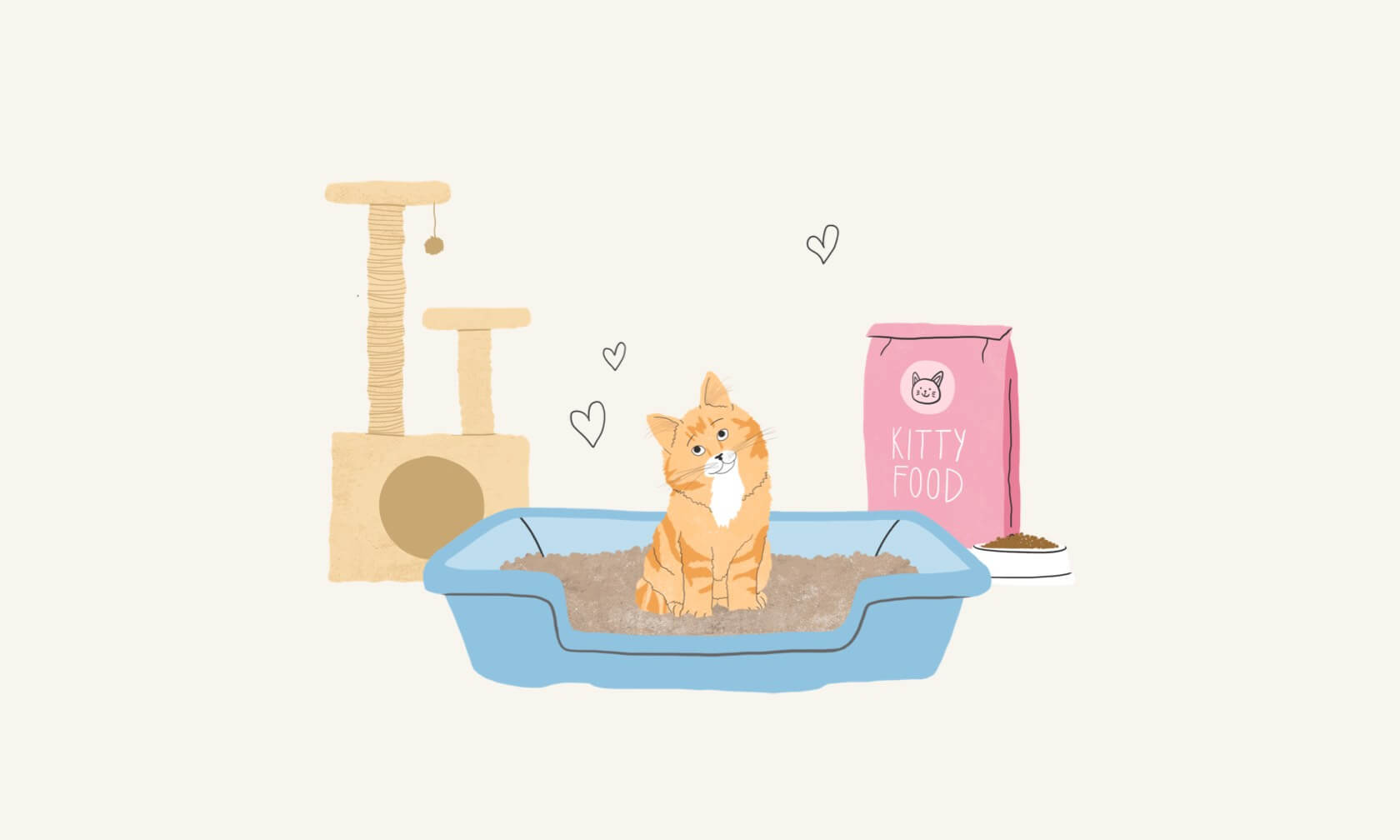When you’re petting your silky cat and come across a clump of stuck-together fur, that’s a mat. Matted cat fur is very common in medium and longer-haired breeds and might not seem like a big deal. In reality, mats can be quite painful and full of nasty stuff that can irritate the skin and it could be a sign of health issues. It’s good to know how to handle a mat in a way that won’t cause undue pain or stress for your cat.
Read through some commonly asked questions and answers on matted cat hair, below.
Why do cats get matted hair? What’s the big deal?
Mats occur in cats with hair long enough to get tangled as they move and shed. Sometimes the knot is just hair. Other times, something dirty or sticky starts the mat, and hair continues to join the party over time. Wet food, debris like mud or small twigs, and even a little poop left behind can start a mat. Over time, the mat gets larger and tighter.
Sometimes if a cat is having a health problem, they may start to develop mats. If they have osteoarthritis pain they may not be comfortable grooming or it may be a skin problem causing their hair to mat. So, if you have noticed a change in your cat’s coat take them to the veterinarian to get checked out.
This can pull on the skin in very painful ways, particularly because mats tend to form in the more sensitive areas like the belly, chest, and butt. If left untreated, mats can prevent your cat from squatting in the litterbox, sitting, stretching, jumping, and other necessary movements.
Thick mats can also block airflow to the skin and limit your cat’s ability to groom that skin. It can become irritated and even infected. This is why mat removal is a priority.
Should you remove mats from your cat’s hair yourself?
If you have a medium or long-haired cat, it’s important to get them comfortable with regular grooming in a slow, positive way. Whether you do some of their grooming at home or take your cat to a professional groomer depends on understanding the grooming process and how your cat responds to you. Regardless, there may be times when your cat has a serious mat, and you can’t get into the groomer or veterinarian right away to remove it. In those situations, if you feel comfortable, you can try and remove the mat yourself. Just remember, this can be scary and painful for your cat if you aren’t prepared and careful. There can be instances where you could accidently cut or hurt your cat when trying to remove these mats, so you should rely on trained professionals when possible.
How to Remove Mats From Your Cat’s Hair
Have your tools handy, like:
• Cat treats or other food they enjoy
• Detangling spray for cats (optional)
• Metal mat comb
• Electric clippers
• Someone to help (if available)
You may have seen a special comb called a “dematter.” These are designed for removing mats, but they are very sharp and can cut your cat’s skin and yours, so exercise caution when using them. Only use a dematter if you’re experienced, your cat is very calm during grooming, and you have someone to help you keep your cat still (without using force).
Avoid bathing your cat while they have a mat – that’s likely to make it worse.
Throughout the dematting process, reward your cat often with a treat. Try not to force them into stressful positions or hold them against their will. It may take a few short sessions to deal with the mat – you don’t have to get it all in one shot. It is also a good idea to get your cat used to grooming before you start removing mats.
Steps To Remove a Cat’s Matted Hair
First, try working the mat out with your fingers, but only if your cat is comfortable. This may not be feasible with tight, painful mats that sit close to the skin. Start when your cat is relaxed. Soak the mat with detangling spray, let it sit for about 10 to 15 minutes (or as directed by the manufacturer), and very gently try separating the hair apart. Don’t pull hard – it will hurt.
If the mat loosens up enough, you can use the metal comb to continue working it out. Use one hand to hold the base of the hair close to the skin. This will help ensure the comb isn’t pulling too hard, like brushing a knot out of a child’s hair and holding the hair at the scalp. Use short strokes, and don’t force the comb if it’s not moving easily.
If you cannot manipulate the mat with your fingers or the comb, you may have to cut it out. Do not pull the mat up and cut it at the base. The pulling is uncomfortable, and you risk catching the skin with the skin. Using an electric pet clipper is often safer than using scissors. It’s faster and decreases your likelihood of cutting your cat’s skin. Make sure you spend some time getting your cat used to the sound and feel of the clippers before you need to use them for grooming.
Start just before the base of the mat, so the clippers don’t immediately pull and get caught up in the mat. Gently and slowly move the clippers along your cat’s skin in short strokes, lightly lifting the mat as it comes away from the skin.
For bad mats, you may need to clip them down in levels, starting at the top where it’s the least tangled, taking off a section, then moving down to take off the next section, and repeating until you reach the skin or a point where you can switch to the comb. Be careful when clipping the hair, as the mats can be close to the skin and you could cut your cat.
When the mat is free, check the area for any signs of irritation. And pile on the rewards for your calm, patient kitty.
Preventing Mats in Your Cat’s Hair
Prevention is always the best option for keeping mats at bay, and it’s pretty simple.
- Brush your cat daily. Even if it’s just one area each day, that’s fine. Brushing will limit the formation of mats and help you catch them early, so they’ll be much easier to work through with a brush or comb.
- Consider a short cut. Having your cat’s hair trimmed shorter means it isn’t long enough to mat, but keep in mind this can impact their ability to keep warm in cooler temperatures.
- Keep the backend clean. A messy posterior means more nasty stuff that can stick in the hair and start the matting process. An unscented, hypoallergenic pet wipe is an easy way to clean the backside. It’s also helpful to give your cat a sanitary cut where the longer hair is shaved around this messy area. You can have your groomer do this for all your cat’s sensitive matting areas (chest, inner thighs, etc.)
- Use the right tools. Different brushes and combs do different things. Talk with your veterinarian or groomer about the best way to brush your cat at home. If you’re using a tool with metal prongs, make sure they’re not too sharp.
ZPC-02546





